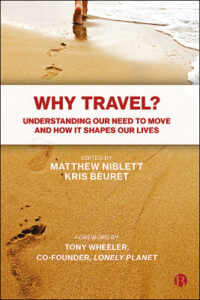‘Striking changes’ in children’s travel finds new report: children travelling less independently and walking less

Children are walking less and making fewer journeys unaccompanied by an adult than they were 30 years ago. Image: pixabay.com Unsplash / 8152 images
28th April 2016
A new report from the Independent Transport Commission highlights “striking changes” in child travel patterns in the UK over the past few decades with children travelling less, making fewer journeys by walking, and travelling less independently. The report, Children and Travel, was authored by social research expert Kris Beuret OBE and reveals the important impacts of these changes on child health and development, as well as exploring the reasons behind these trends, and recommendations on how they might be addressed.
Statistics in the report show that although the per capita distance travelled by children is similar to 20 years ago, child walking has declined and been replaced by car travel, which is now the most common mode of child travel in the UK (although in London children’s travel by bus and rail travel has also increased). The average length of the journey to school has increased by about a third since the 1990s,[1] so children are making fewer but longer journeys in cars. Also, children are making far fewer journeys unaccompanied by adults: notably, the number of children travelling independently to school has fallen from 86% in the 1970s to only 25% in recent years.
As the report highlights, the dramatic reduction in independent mobility could have profound and far reaching consequences. Decades of psychological research has shown that: “Children’s experience of space and travel is essential for an understanding of the complexity of our technological world… especially in relation to mathematical ability but also to the development of social connectivity.” Furthermore, childhood obesity is around four times higher than it was 30 years ago, something which many experts believe is linked to decreased mobility (rather than increased calorie intake). According to a recent paper from the Policy Studies Institute: “Children’s independent mobility matters for a variety of reasons, including the ability to be autonomous and safe outside the home, staying physically fit and reducing the risk of obesity, and developing social and practical skills. Losing this independence can leave children less self-sufficient, less healthy and less free.”[2] And, since the habits and attitudes we form in childhood can affect our adult behavior, these changing child travel trends may shape the travel choices of the future.
The causes of these trends include more time spent behind computer screens, longer journeys to school, and confusion over child public transport fares. Many children want to travel more independently but are not allowed to because of parents’ concerns over road safety and personal safety, as well as fear of criticism – or sanctions by authorities – for allowing their children to travel alone. Advocates for active travel, sustainable and child-friendly urban environments have been working for many years to promote better design of cities and roads. These need to be safer for pedestrians and cyclists so that more people – children included – will feel able to leave their cars. Indeed, the 1970s Dutch campaign group Stop de Kindermoord, which was formed by parents concerned about the high level of child road deaths, was instrumental in transforming the Netherlands from being car-dominated in the 1970s into the world’s most cycling-friendly nation that it is today.[3] As one Guardian journalist recently wrote about the car: “these amazing machines give us unprecedented freedom. For this, we have traded the liberty of our children.”[4]
According to the ITC report’s author there is a need for better data on child travel and evidence-based road safety programmes; as well as road, housing and neighbourhood design which prioritises children’s play and safety needs. Beuret concludes that “children are neglected in transport policy and provision… [and are] ‘invisible’ as passengers in their own right.” In order to encourage children out of cars, onto public transport and to walk and cycle more, children must be included within transport planning, design of transport (e.g. facilities for children and families) and in transport provision (including training of front-line staff).
This report complements the wider research undertaken by the ITC in both our road and rail trends project On the Move, and our project Why Travel?, which employs perspectives from across the sciences and humanities in order to better understand the fundamental motivations for human travel. As this most recent paper concludes: “The ITC’s view is that encouraging travel, including children’s travel, is desirable and an essential element of what makes us successful human beings… We need to think about this issue, especially if we want children to grow up to travel more sustainably not just in relation to modal choice but also to improve health and wider cohesion in the public realm.” For more information on the ITC, Britain’s foremost independent land use and transport think tank, please visit www.itc.org. And to find out more about the Why Travel? project, including expert views and current research, see www.whytravel.org.
[1] Mostly due to rural school closures and parental choice of schools out of the catchment area.
[2] http://www.psi.org.uk/children_mobility
[3] http://www.aviewfromthecyclepath.com/search/label/stop%20de%20kindermoord and http://www.theguardian.com/cities/2015/may/05/amsterdam-bicycle-capital-world-transport-cycling-kindermoord
[4] http://www.theguardian.com/commentisfree/2016/apr/11/liberty-children-freedom-cars-isles-of-scilly?CMP=Share_iOSApp_Other


